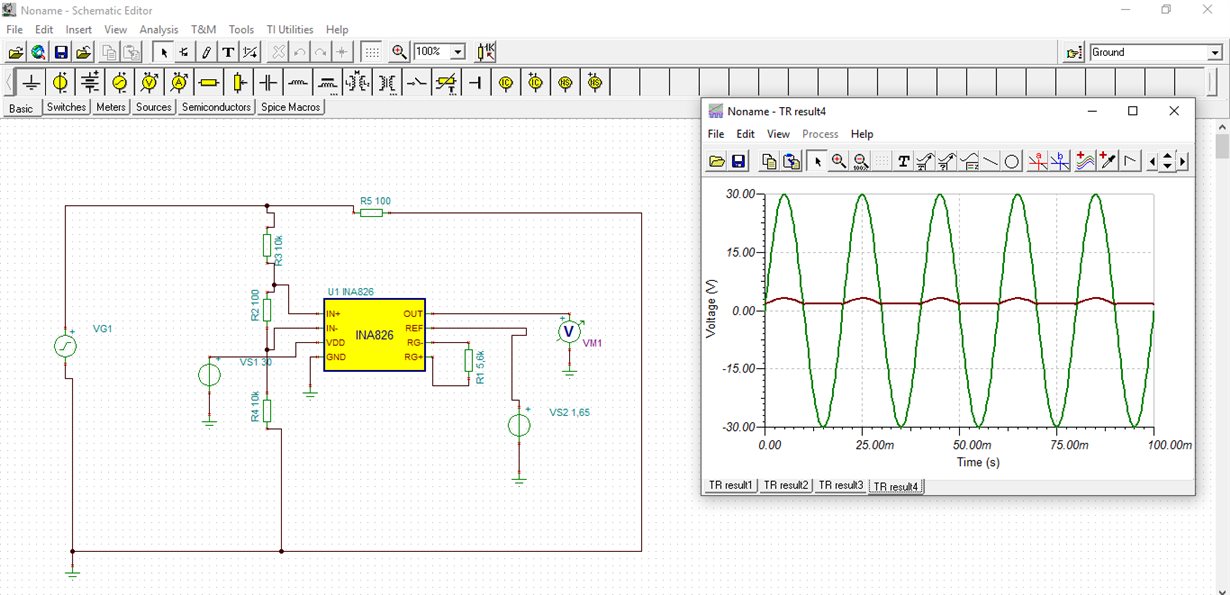Hello,
I would like to measure AC voltage using INA826. I designed a circuit and run simulation in Tina.
AC amlpitude: 30V, VDD=30V, Uref=1,65V. Is the circuit design correct? I expected the input to be just amplified and increased by Uref.
Thank you, Ondra.



